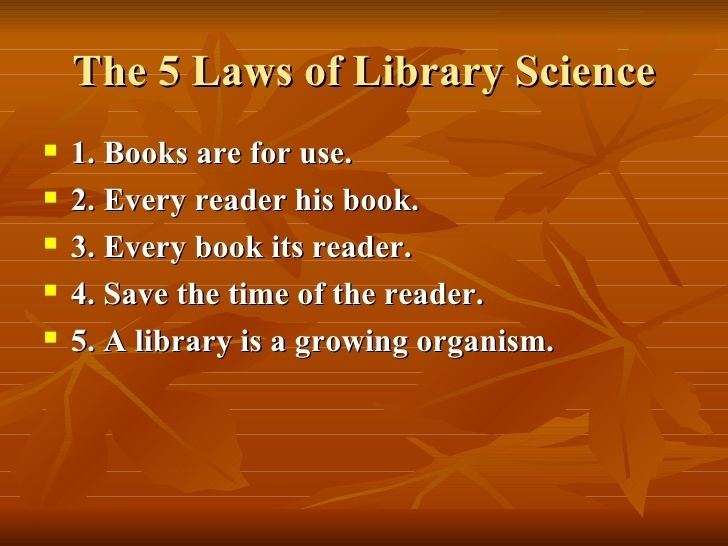
The 5 Laws of Library Science is a theory proposed by S. R. Ranganathan in 1931, detailing the principles of operating a library system. Five laws of library science are called the set of norms, percepts, and guides to good practice in librarianship. Many librarians worldwide accept them as the foundations of their philosophy. Dr. S.R. Ranganathan conceived the Five Laws of Library Science in 1924. The statements embodying these laws were formulated in 1928. These laws were first published in Ranganathan’s classic book entitled Five Laws of Library Science in 1931. These laws are:
- First Law: Books Are For Use
- Second Law: Every Reader His/Her Book
- Third Law: Every Book Its Reader
- Fourth Law: Save The Time Of The Reader
- Fifth Law: The Library Is A Growing Organism